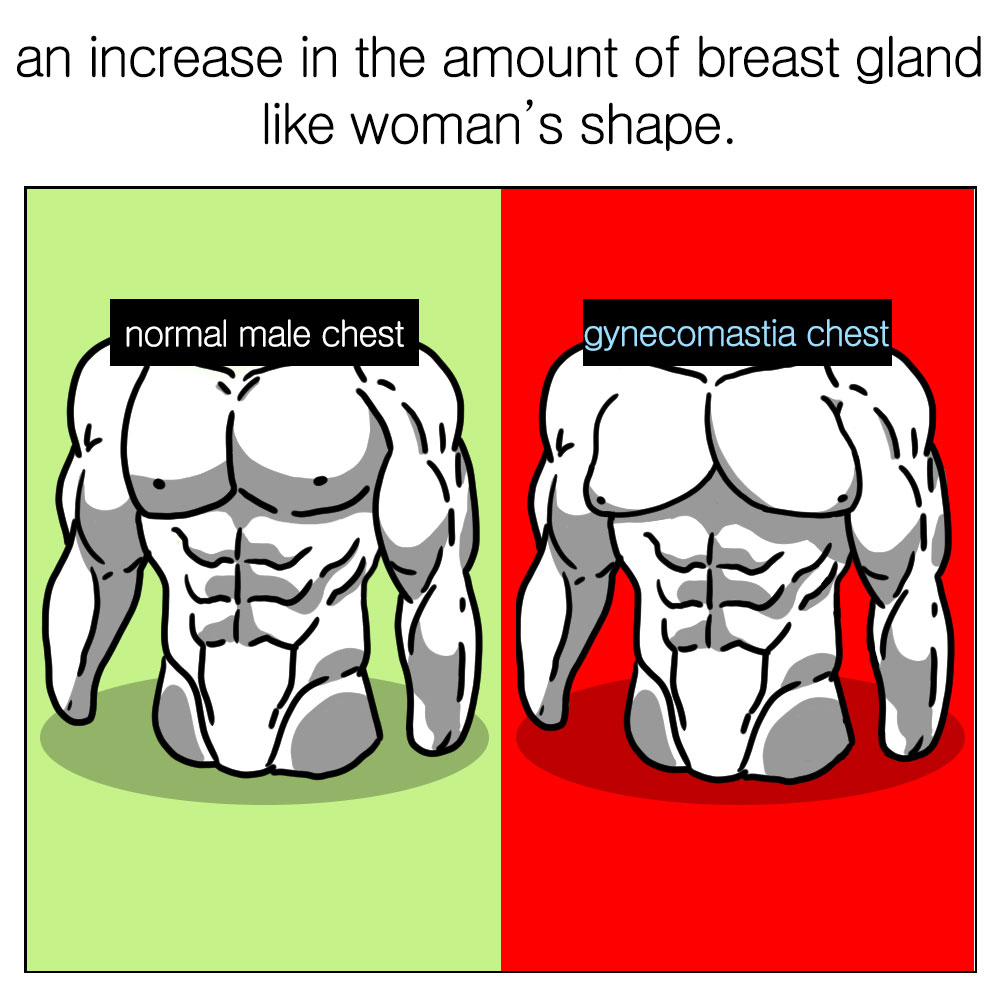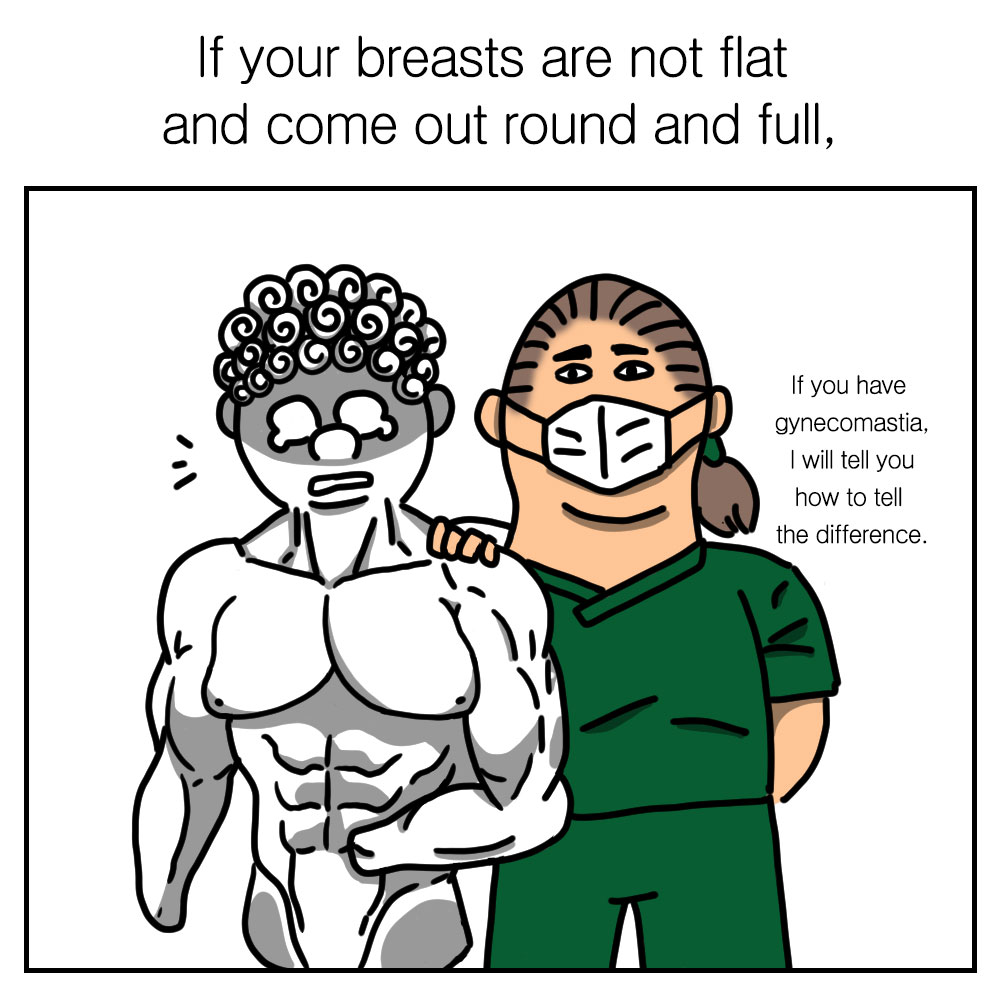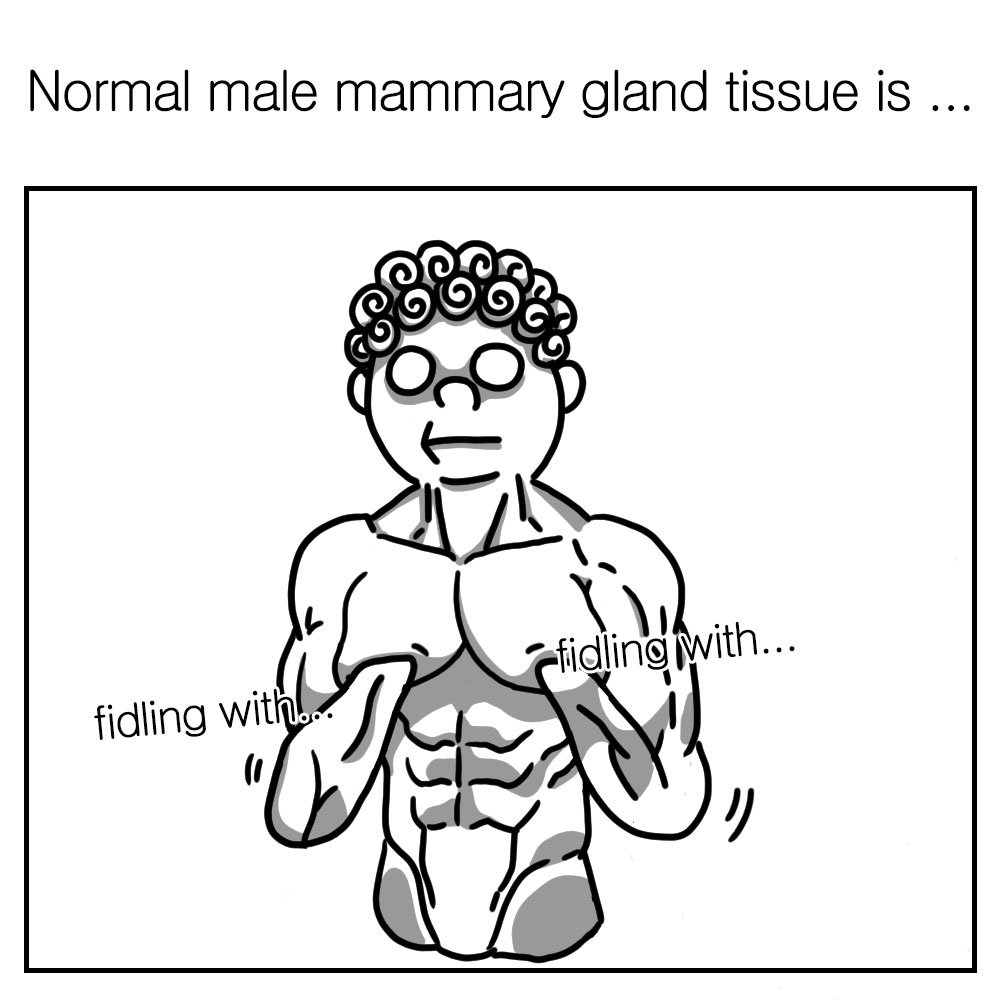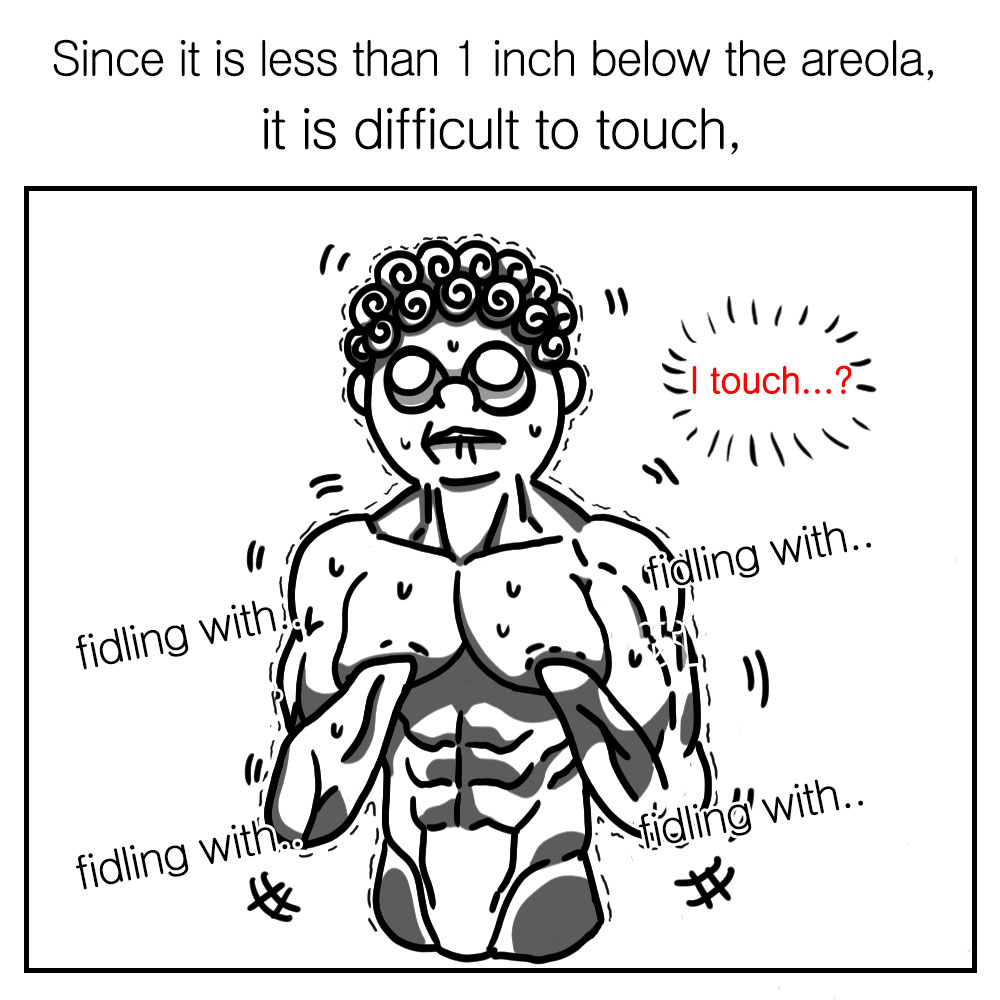
Gynecomastia is a condition in which a man’s chest develops a shape resembling that of a woman’s breast. It is typically caused by the development of mammary gland tissue beneath the areola.
There are two types of gynecomastia:
-
True Gynecomastia: Enlargement due to developed glandular tissue.
-
Pseudogynecomastia: Enlargement caused primarily by fat accumulation.
This guide will help you identify true gynecomastia through simple self-examination.

La ginecomastia significa literalmente que los senos de un hombre tienen la misma forma que los de una mujer.

El pecho masculino tiene una apariencia relativamente plana con piel, grasas y músculos.
Step 1: Understand the Normal Male Chest Structure
A typical male chest consists of:
-
Skin
-
Subcutaneous fat
-
Muscle tissue (mainly the pectoralis major)
-
Small traces of mammary gland (normally <1 inch, ~5 grams)
In most men, glandular tissue is minimal and not easily palpable with fingers.

Por otro lado, los senos de las mujeres tienen una apariencia regordeta debido al tejido glandular que se ha desarrollado en esa área.

Puede verificar si hay un tejido de la glándula mamaria firmemente sostenido debajo de la areola.

Of course, normal men also have traces of mammary glands.
However, since they are usually less than 1 inch in size and weigh around 5~10 grams,
they are difficult to hold with your fingers.
✋ Step 2: Check Under the Areola
Using your fingers, gently press around and under your nipple (areola) area.
-
If you feel a firm, rubbery disc or lump beneath the areola, this may indicate developed glandular tissue.
-
If this tissue is easily graspable and surrounded by softer fat, true gynecomastia is likely.

Sin embargo, si la glándula mamaria es lo suficientemente grande como para ser palpable,
y se acumula grasa más suave a su alrededor,
La verdadera ginecomastia puede ser fuertemente sospechada.

El ultrasonido o la mamografía se pueden utilizar para un diagnóstico preciso,
Pero un especialista en ginecomastia experimentado puede diagnosticar fácilmente la ginecomastia tocándola ligeramente.
Y, debe obtener una consulta detallada de un especialista sobre cómo tratarlo.
Step 3: Confirm with a Specialist
Although self-diagnosis is a helpful first step, an accurate diagnosis should be made by a medical professional using:
-
Physical examination
-
Ultrasound or mammography (if needed)
At Evita Clinic, our gynecomastia specialists can usually confirm the diagnosis with a brief touch and visual assessment.
✅ Next Step: Consultation & Treatment Plan
If you suspect you have gynecomastia, schedule a consultation.
We’ll explain your condition in detail and recommend personalized treatment options — surgical or non-surgical.
Most true gynecomastia cases require surgical removal of the gland for a permanent solution.
